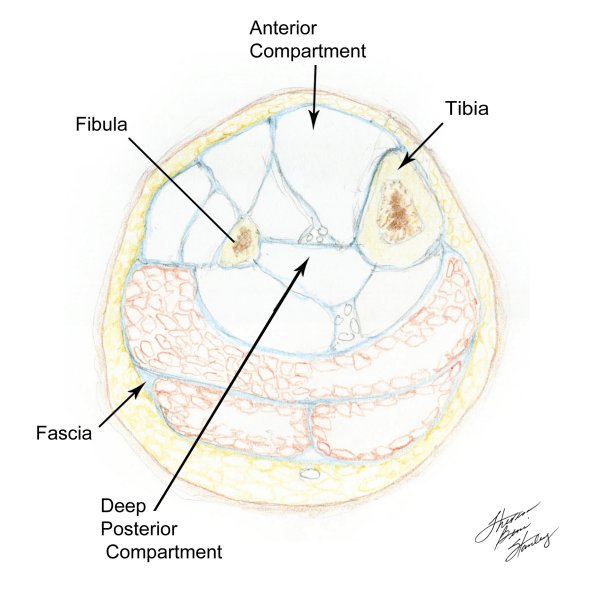|
. . The muscle groups of the upper and lower extremities are divided into compartments (Illustration 64 ). Each muscle is encased in a strong fascial membrane to form each compartment. The compartment syndrome occurs when increased pressure within a compartment compromises the vascular, muscle and nerve content of the compartment. The extreme case would be necrosis of these tissues. The compartment syndrome is considered a surgical emergency requiring a fasciotomy. The compartment syndrome can be caused by a number of conditions, with the two most common trauma causes being soft tissue crushing injury and shaft fracture of the long bones (especially the tibia-fibula and radius-ulna spiral fracture). Compartment syndromes are among the most potentially devastating conditions presenting to the emergency department, e.g., the Volkmann contracture is the end result of muscle and nerve ischemia of the forearm when the syndrome is not treated. Clinical evaluation and recognition require that you be aware that the earliest and most reliable sign of a compartment syndrome is severe pain ( disproportionate to the physical findings ). Also palpation of the compartment will reveal its tenseness.
|

